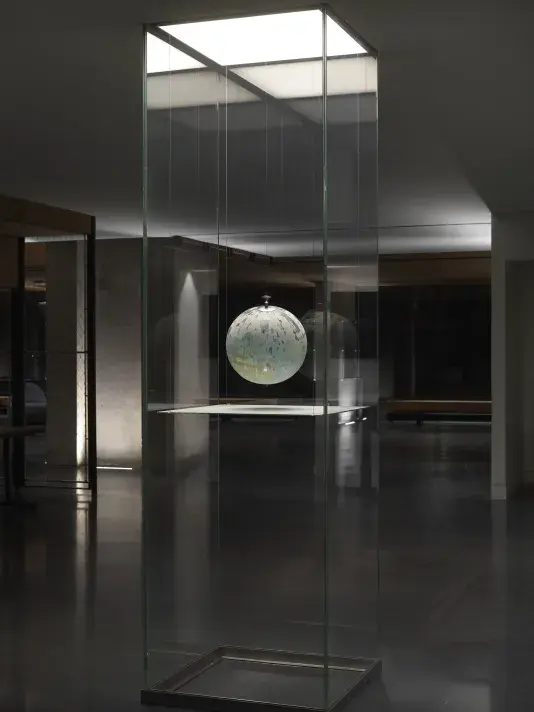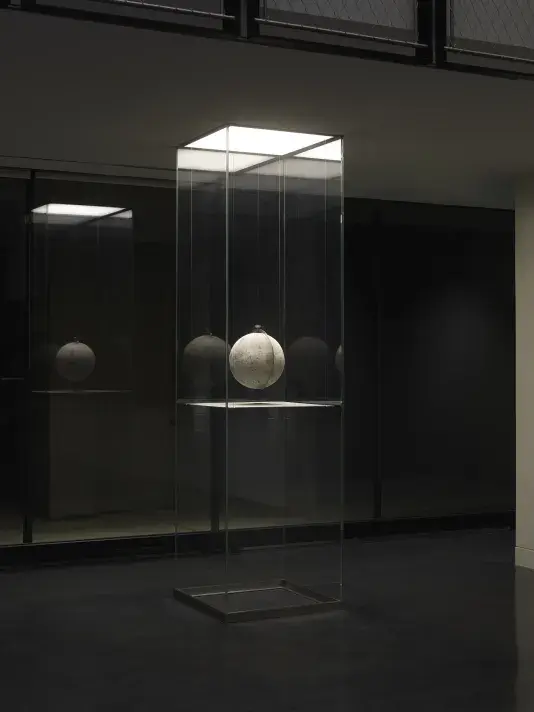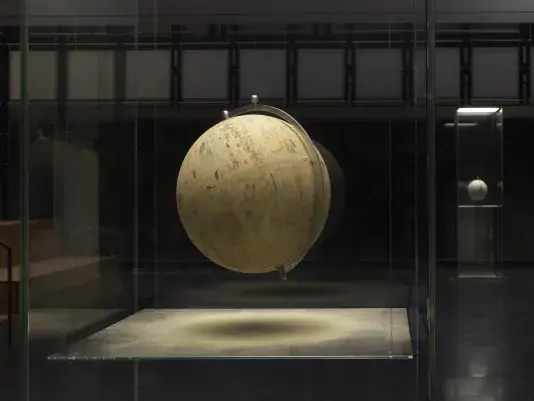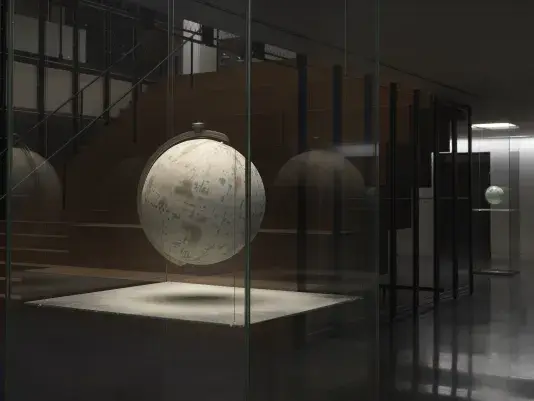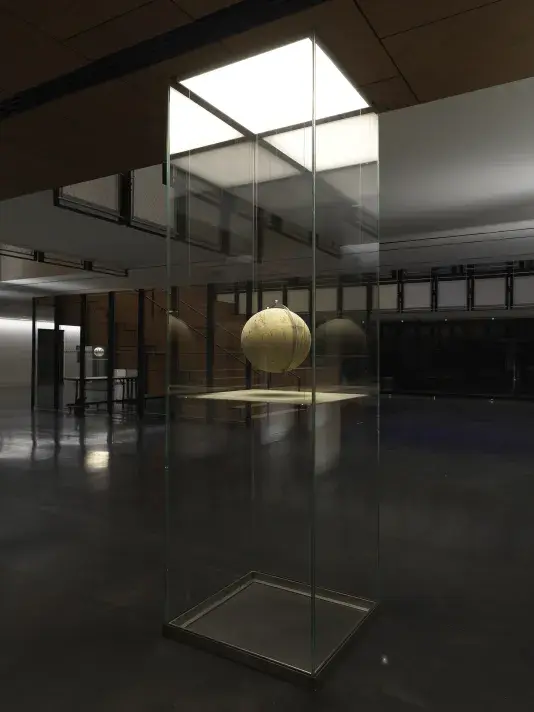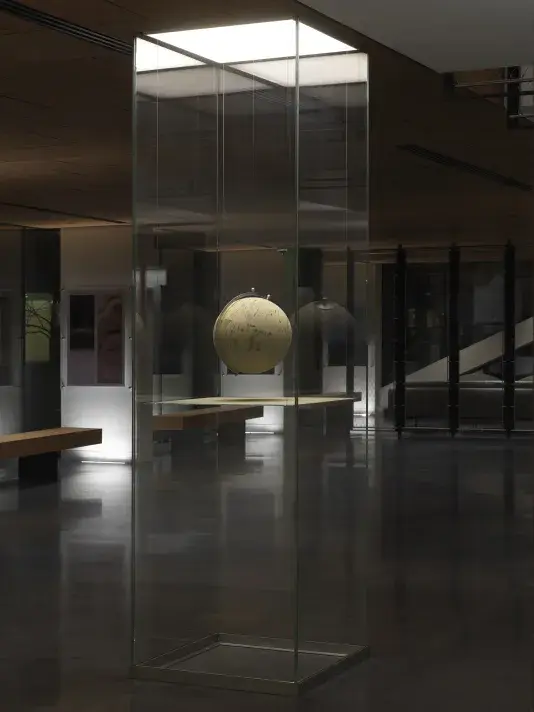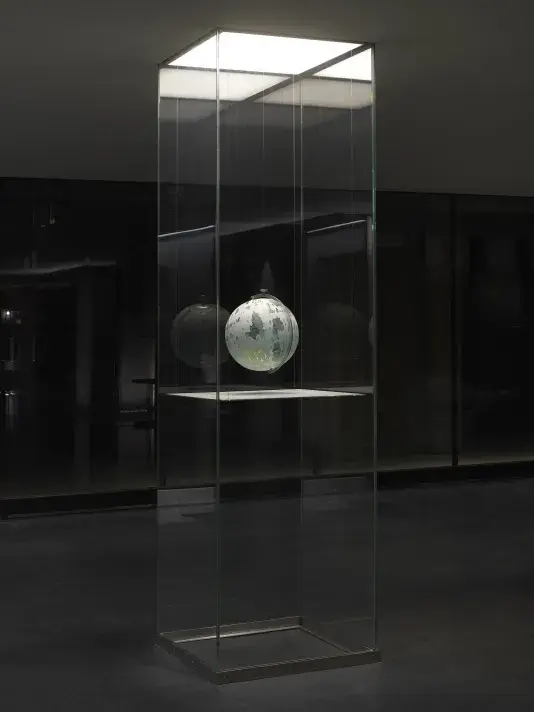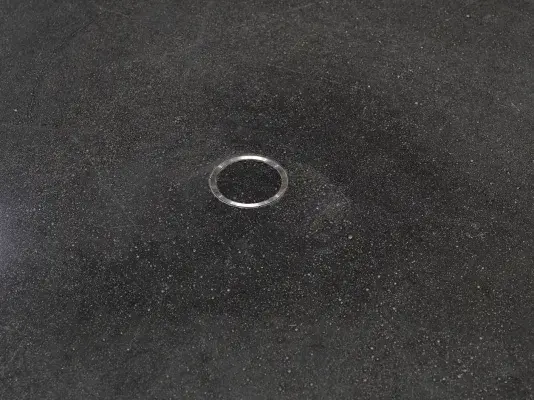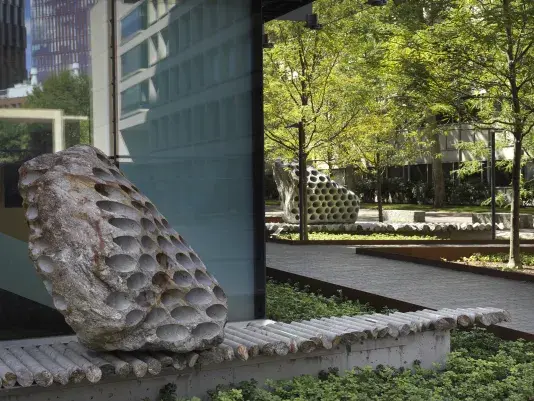Julian Charrière, We Are All Astronauts, 2013/2023. Commissioned with MIT Percent-for-Art funds and a generous gift from Robert Sanders (‘64) & Sara-Ann Sanders. Photo: Dario Lasagni
We Are All Astronauts, 2013/2023
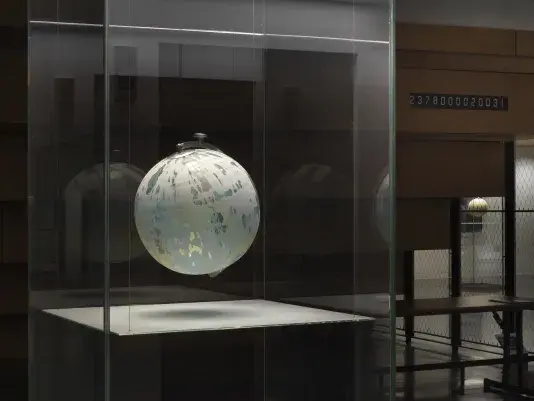
Much of Julian Charrière’s work is concerned with how humans have represented and interacted with the natural world. “A recurring question in my work,” he has said, “is how that relationship changes—how our ideas of what constitutes as nature and the natural world are cultivated and transfigured.”
Located within the lobby of the new Tina and Hamid Moghadam Building (Building 55), We Are All Astronauts (2013/2023) consists of three antique globes, each suspended in a floor-to-ceiling glass vitrine designed by the artist—in dialogue with the building’s architects Anmahian Winton—to echo the scale and placement of I. M. Pei’s original concrete pillars. While Pei’s pillars continue to support the weight of the tower above, these glass frames are hardly weight-bearing, even if their placement (together with the work’s title) suggests a foundational relationship to the building’s disciplinary focus on Earth and Planetary Sciences.
The surfaces of the globes have been abraded by what Charrière calls “international sandpaper,” which the artist originally made in 2013 using mineral samples collectedfrom all 195 United Nations–recognized countries. The dust from the abraded globes has accumulated below, forming abstract topographic patterns. By sanding away political boundaries and even the distinctions between land and ocean, Charrière’s work models the “planetary consciousness” that has long characterized the environmental movement. This conception of humanity as one species—with a shared fate connected to our common planet—can be traced back to the 1960s countercultural milieu of Stewart Brand and his Whole Earth Catalog. The work’s title is drawn from a quote by R. Buckminster Fuller, the architect and systems theorist who was a hero to Brand and other early ecological thinkers. “We are all astronauts on a little spaceship called Earth,” Fuller wrote.
At the same time, Charrière’s use of UN-recognized countries indexes the irrevocably political process of determining who constitutes, or speaks for, “the world.” His international sandpaper, nominally inclusive of the world’s population, has no place for those who fall outside the system of the nation-state: the internally colonized, Indigenous, and stateless people who suffer the worst consequences of climate change. Global warming is expected to render more regions of the world unfit for human habitat, creating unprecedented migration and displacement. Charrière’s work, then,also points to the inefficacy of existing international human rights frameworks. The hanging globes of We Are All Astronauts are precariously balanced between the existing and future realities of globalism and statelessness and utopian dreams of planetary consciousness.
We Are All Astronauts is one work within Charrière’s three-part commission for the new Tina and Hamid Moghadam Building Pavilion at MIT, collectively titled Everything Was Forever Until It Was No More (2023), which includes Not All Who Wander Are Lost (2019/2023) and Pure Waste (2021/2023).
Julian Charrière (b. 1987) was born in Morges, Switzerland and lives in Berlin. His work examines the representation and perception of the natural world in an age of planetary ecological change. He studied with the artist Olafur Eliasson as a participant in his Institut für Raumexperimente (Institute for Spatial Experiments) at the Berlin University of the Arts. His work has been exhibited at institutions across the world, including solo presentations at the San Francisco Museum of Modern Art, Langen Foundation, Neuss, Germany, Dallas Museum of Art, Museo d’Arte Moderna di Bologna, Italy, Berlinische Galerie, and Musée Cantonal des Beaux-Arts de Lausanne, Switzerland, among others.

